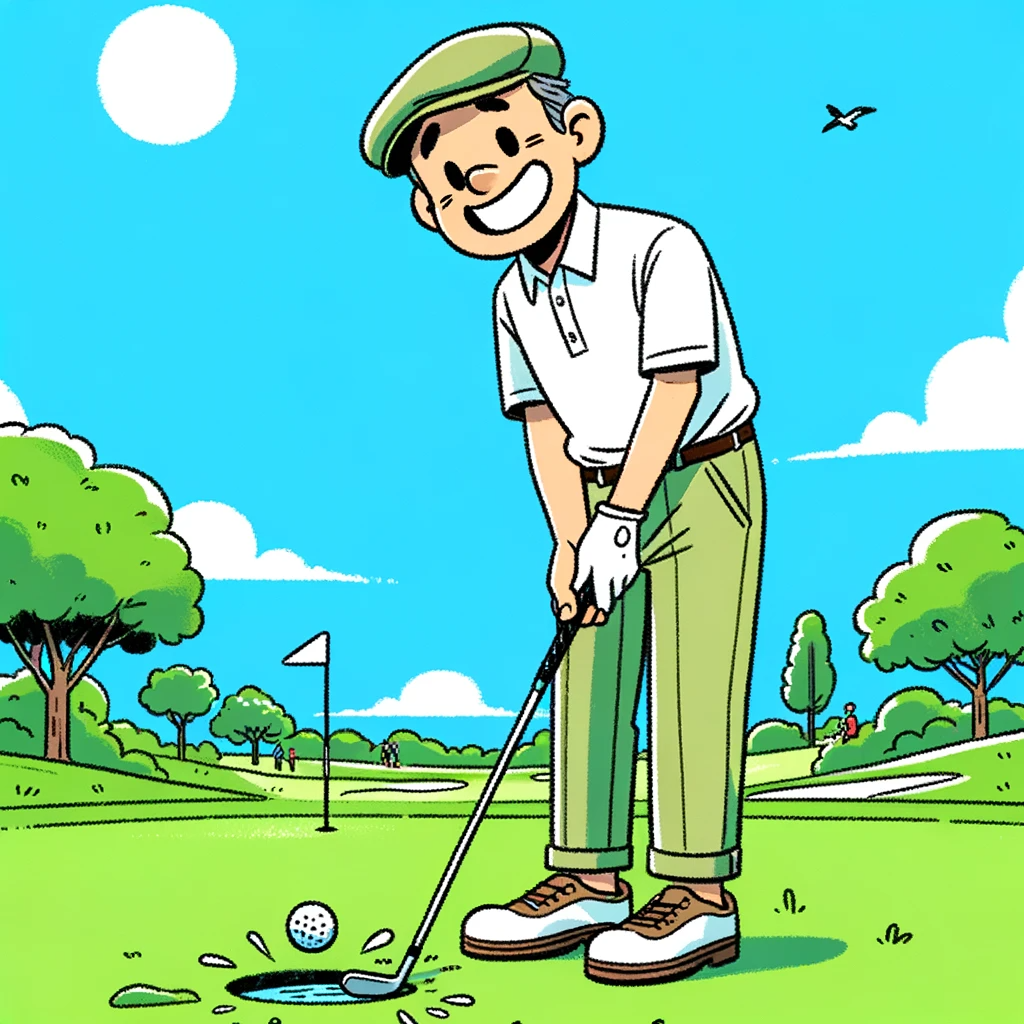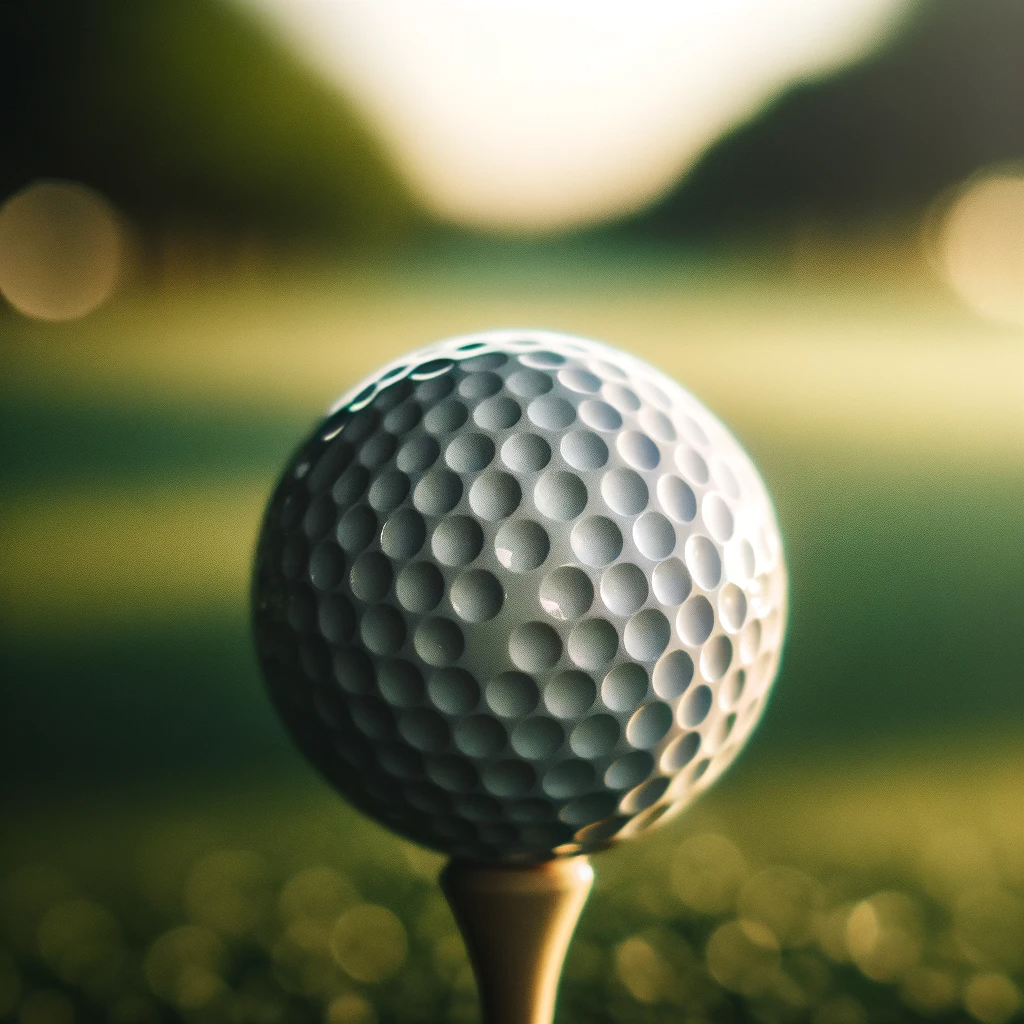- Home
- Equipment
- Golf Balls
- Which Golf Balls Should I Use
Which Golf Balls Should I Use: Guide to Choosing the Right Golf Balls
Struggling to find consistency in your golf game? The solution might be simpler than you think: it's all about using the right golf balls. In this comprehensive guide, we delve into the critical role of golf balls in enhancing your gameplay. Whether you're a seasoned player or just starting, understanding how to match the ball to your style is a game-changer. Plus, don't miss our key takeaways and FAQ section for quick insights. Ready to play your best game yet? Let's tee off!
There's a moment on the golf course that feels almost magical, isn't there? When the club connects with the ball in that perfect, sweet spot, and it soars through the air just as you envisioned. But what if I told you that not every "perfect" swing hits its mark, not because of your stance or the wind but because of the ball you're using? Yes, the humble golf ball, often overlooked, could be the secret weapon to shaving strokes off your game.
Like you, I once stood on the course, feeling both amazed and frustrated. My swings were consistent, my focus was sharp, but my scores? They remained stagnant. I was missing something, an untapped resource, a piece of the puzzle. That's when I stumbled upon a piece of insider information so simple yet game-changing: the critical role of choosing the right golf ball. It's not just about the dimples or the brand; it's about understanding how this little sphere can become your greatest ally on the course.
Imagine stepping onto the course, confidence surging through you because you know you've got the right ball in your bag. This isn't just any ball; it's the one that complements your swing speed, control, and style of play. With the right golf ball, your shots become more accurate, your control gets enhanced, and you'll watch in awe as your scores start to plummet. You'll feel that rush of being invincible, of knowing that you're not just playing the game but dominating it.
So, how do we unlock this secret? How do we demystify the science and art behind choosing the right golf ball?
Stick with me, and I'll take you through a journey, from understanding the core differences in golf ball types to matching them with your unique playing style. We'll explore insider secrets, tips, and cutting-edge strategies that will transform the way you look at this game. Ready to turn confusion into clarity and anticipation into action? Let's dive into the world of golf balls and uncover the hidden power they hold in elevating your game to new heights.
Shall we get started?
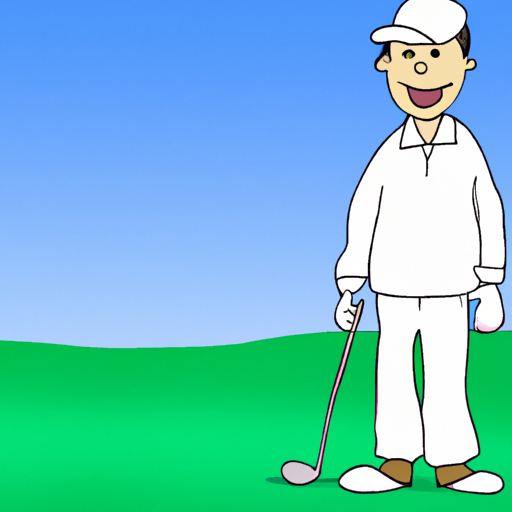 Dive deep into the world of golf balls and find your perfect match!
Dive deep into the world of golf balls and find your perfect match!How the Right Golf Ball Changed Everything
I remember the days when I'd stand on the lush fairways, the sun just beginning to peak over the trees, casting long shadows on the meticulously manicured grass. My heart would be pounding with excitement, hands slightly trembling with anticipation. Golf wasn't just a sport to me; it was a passion, an obsession. But, like many, I was a weekend warrior, juggling my love for the game with the demands of everyday life. And, despite my best efforts, my game had hit a plateau. My swings were strong, my stance was solid, but something was amiss. The ball just didn't go as far or as accurately as I knew it could. It was both confusing and, frankly, a little humiliating.
I spent more hours than I care to admit scouring the internet, reading up on every golfing tip and trick in the book. I was determined to figure out what I was doing wrong. I changed my clubs, adjusted my grip, even altered my entire swing! But the game-changer? It was so simple I couldn't believe I'd overlooked it: my golf ball. I had always played with whatever was on sale, never giving a second thought that it was the most frequently used piece of equipment in my bag. I hadn't realized the profound impact this little sphere could have on my game.
The journey to understanding was like peeling back the layers of an onion. Golf balls, I discovered, weren't just about whether they were new or used, expensive or cheap. They had personalities, behaviors, and characteristics that could make or break your game. There were balls for distance, balls for spin, balls for control, and balls that combined some or all of these traits. I was dragged, kicking and screaming, into the world of golf ball construction, from the core to the cover, learning how each component could influence the flight and behavior of the ball.
When I finally matched my playing style with the right golf ball, it was like unlocking a secret level in a video game. Suddenly, the fairways seemed wider, the holes seemed closer, and my scorecard? Well, let's just say I wasn't afraid to show it off anymore. The right golf ball became my untapped resource, my hidden asset, my little sphere of confidence. It was like I had discovered a valuable piece of insider information, and I was now privy to a secret club.
Now, life on the course is different. There's a swagger in my step, a certainty in my swing. I still respect the game, the course, the elements – after all, golf is an honorable sport. But I've tapped into a level of performance I once thought was reserved for only a few. Off the course, this journey taught me a valuable lesson that extended beyond the greens. It showed me that sometimes, it's the smallest things that can make the biggest difference. It's about paying attention to the details, being open to learning, and always, always questioning the status quo.
So, if you're standing where I once stood, scratching your head, wondering why your game isn't improving, I invite you to explore this guide. Together, we'll delve into the often overlooked aspects of choosing the right golf ball and how this knowledge can elevate not just your game, but also your confidence and enjoyment of this beautiful, maddening, and utterly addictive sport.
Are you ready to embark on this journey with me?
Let's get started.
How Do Different Golf Balls Affect My Game?
You know, I used to believe that a golf ball was just a golf ball. Round, dimpled, white - they all looked the same to me. But oh, how wrong I was! It wasn't until I found myself stuck in a rut, my handicap stubbornly refusing to budge, that I realized the profound truth: the kind of golf ball you use can be a game-changer. Let me take you on a journey into the heart of this revelation, the same journey that transformed my game from "just okay" to "hey, look at that shot!"
1. Construction Matters: Golf balls come in various constructions, from one-piece balls mainly used on driving ranges to the advanced, tour-level five-piece balls. Each layer added gives the ball more ability to respond to different types of shots. It's like each layer adds a new level of adaptability and potential to your game. I remember the first time I switched from a cheap two-piece ball to a more sophisticated four-piece one; the control I had was mind-blowing. It was like going from driving a clunky old car to a high-performance sports car - the feel, the responsiveness, it was a day and night difference.
2. Dimples Do More Than Just Look Cute: Those little depressions on the surface of golf balls are scientifically crafted to optimize aerodynamics. They affect the ball's trajectory, speed, and spin. One time, I played with a ball I found that had scuff marks, altering the dimple pattern, and my shots were wildly unpredictable. That's when I realized the devil is truly in the details!
3. Compression Is Key: The compression of a ball affects how it reacts to being hit. Low compression balls are softer, making them easier to compress for players with slower swing speeds, like mine used to be. High compression balls, on the other hand, offer more control but require a faster swing to compress properly. When I tried a high compression ball with my then slower swing, it felt like hitting a rock, and the ball barely went anywhere!
4. Spin Can Be Your Best Friend...Or Your Worst Enemy: Different balls offer varying degrees of spin. Some are designed to reduce spin, helping those with a slice (like I had) or a hook keep their shots straighter. Others offer more spin for better control on the greens. I'll never forget the wickedly effective shot I played with a high-spin ball that landed on the green, spun back towards the hole, and stopped just inches away. It was nothing short of magical.
5. Cost Doesn't Always Equal Quality: Just because a ball is expensive doesn't mean it's the best ball for your game. The most suitable ball for you matches your skill level, swing speed, and the typical conditions in which you play. I learned this the hard way when I splurged on tour-level balls only to find they didn't match my game at all. It was a costly lesson, but a valuable one!
Understanding how different golf balls can affect your game is like being given the keys to a secret library. Each ball holds a different potential, a different style of play, and finding the right one for you... well, that's like finding a dance partner who moves to the same rhythm as you do. It's harmonious, empowering, and, dare I say, can make you fall even deeper in love with this beautiful game.
So, what's the takeaway here? Never underestimate the power of the golf ball. Experiment, explore, and find that perfect sphere that sings to your swing. And remember, the journey to finding it can be just as rewarding as the destination. After all, who doesn't love a good treasure hunt? Now, are you curious about how to choose the right golf ball for you?
Keep reading, because that's exactly what we're diving into next!
What Factors Should I Consider When Choosing Golf Balls?
Ah, the quest for the perfect golf ball. It's a journey I've been on myself, and let me tell you, it's not just about picking the shiniest ball on the shelf. It's about understanding yourself as a golfer and knowing what you need from that little dimpled friend. Here's what I've learned about choosing golf balls, and I hope my insights light your path to finding your ideal golf companion.
1. Understand Your Swing Speed: This was a game-changer for me. Swing speed influences how much you can compress the ball, and each ball type has a different compression factor. For instance, if you have a slower swing speed like I did when I first started, a lower compression ball can be your ally, helping you achieve greater distance.
2. Know Your Skill Level: Are you a beginner, an intermediate, or an advanced player? I used to overestimate my skills and go for balls used by pros, only to realize they didn't suit my game. Beginners and intermediates might prefer balls that offer more forgiveness, while advanced players might opt for balls that provide better control and spin.
3. Consider the Course Conditions: I learned this the hard way when I played with a high-spin ball on a windy day; oh, the horror! The weather and course layout can influence ball behavior. Softer balls can be great for dry conditions, while you might want something with a harder cover on wet days.
4. What's Your Playing Style?: Are you more of a risk-taker, going for those long, daring drives? Or are you a strategic player, focusing on control and precision? I'm the latter, so I prefer balls that offer more control and a medium spin rate.
5. Budget Wisely: Golf can be an expensive sport, and the cost of balls can add up, especially if you're prone to losing them in hazards as I was during my early days. Set a budget that allows you to play comfortably without worrying about every ball you might lose.
6. Feel Matters: Some golfers prefer a softer feel, while others like a firmer impact. I can't play with balls that feel like rocks; it just throws off my entire game. So, don't ignore how a ball feels when you strike it.
7. The Importance of Spin: I used to struggle with hooks and slices until I discovered low-spin balls that minimized those issues. Depending on your typical ball flight and challenges, you'll want to choose a ball with the appropriate spin characteristics.
8. Durability is Key: If you play frequently, you'll want a ball that can last more than a round or two. I remember being thrilled about the performance of a particular brand, only to be disappointed by the wear and tear after one game.
Choosing the right golf ball is like finding a trusty sidekick. It's not just about performance; it's about how you feel when you're playing. When I finally found the ball that suited my style and needs, my confidence soared, and my handicap plummeted. It was like unlocking a new level in my golfing journey.
So, take these factors into consideration, do some experimenting, and find that ball that feels like it was made just for you. Trust me, it's out there. And remember, the right ball won't just improve your game; it'll boost your confidence, making every round more enjoyable.
Are Expensive Golf Balls Really Worth It?
I remember standing in a golf store, gazing at the shelves, my eyes wide with disbelief at the price tags on some golf balls. "Are they sprinkled with gold dust?" I wondered. This burning question stayed with me on the course, making me question every shot: "Would this have gone better with a pricier ball?" After years of experimentation and, yes, a bit of grumbling over lost expensive balls, here's the insider scoop I've gathered on whether shelling out those extra dollars really makes a difference.
1. Advanced Technology and Materials: High-end balls are the Formula 1 cars of the golf world. They're designed with advanced materials and technology, offering better control, spin, and distance. I once splurged on a top-tier ball, and the difference in my shot precision was startling — it was like I'd been playing with a supermarket gumball before!
2. The Skill Factor: Here's a hard truth I had to face — an expensive ball won't fix fundamental issues in your swing or strategy. When I was a beginner, the high-end balls were like fancy running shoes on a novice runner; nice, but they didn't make me a pro golfer.
3. Course Management: Pricier balls can offer an advantage in course management. They respond better to more nuanced shots, something I appreciated more as my skills improved. With a better ball, my approach shots looked more like what I envisioned in my mind's eye.
4. The Psychological Edge: Never underestimate the confidence boost that comes with using high-quality gear. When I first teed up with a premium ball, I felt like I had a secret weapon. This mental edge can be worth every penny, especially in competitive scenarios.
5. Durability and Consistency: Expensive balls tend to be more durable and provide consistent performance. I used to buy cheaper balls and found they'd scuff or deform faster, affecting my play. The premium ones stayed in game shape longer, saving money in the long run.
6. The Law of Diminishing Returns: There's a sweet spot where cost intersects with value, and exceeding it offers minimal extra benefit. I learned this after upgrading to a mid-tier ball with great results, then trying an even pricier one and noticing hardly any improvement.
7. Personal Preference and Comfort: Sometimes, the ball just feels right. I've played with less expensive balls that suited my style perfectly and didn't see the need for a pricier one. It's like finding comfortable running shoes; the most expensive ones aren't always the best fit for everyone.
8. The Pain of Loss: Let's be real, losing a golf ball stings, but losing an expensive one? That's a heartache. When I started, I lost balls frequently, and sticking to a lower price range saved me both money and sorrow.
So, are expensive golf balls worth it? They can be, depending on your skill level, style, and yes, your budget. They won't magically transform you into Tiger Woods, but they can enhance your game in subtle ways. For me, upgrading was worth it when my skill level started to catch up to what the ball offered. But remember, the best golf ball is the one that feels right for you, aligns with your game, and doesn't make your wallet weep when it decides to go for a swim.
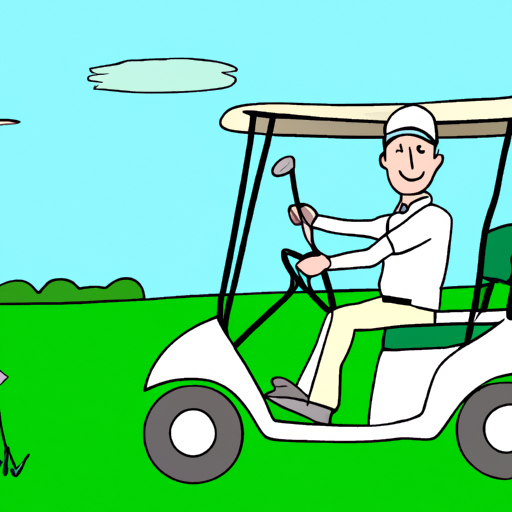 The secret to a winning game? It's all in the golf ball!
The secret to a winning game? It's all in the golf ball!How Do I Match Golf Balls to My Swing Speed?
I'll never forget the day I realized that my beloved golf balls were, in fact, mismatched with my swing speed. I was at the driving range, consistently out-driven by my buddy who, I knew for a fact, was not that much stronger than me. It was a humbling and slightly frustrating experience, leading me to deep-dive into the relationship between golf balls and swing speed. Here's what I discovered:
1. Understanding Swing Speed: First, I had to confront the truth about my swing speed. Was I the powerhouse I imagined? Not quite. Most amateur golfers swing between 85 - 104 mph, while pros can exceed 110 mph. I fell into the amateur category. Knowing your true speed is crucial; it's like knowing your shoe size before buying a pair of sneakers.
2. Low Swing Speed (Below 85 mph): If you're in this category, a low-compression ball is your best friend. I learned this the hard way after months of using high-compression balls, thinking they'd make my drives soar. They didn't. Low-compression balls are softer, requiring less force for deformation and creating more distance on the drive.
3. Medium Swing Speed (85 - 104 mph): This is where I landed, and it's a common bracket. Medium-compression balls worked like a charm for me. They offer a balance between distance and control, giving you the best of both worlds.
4. High Swing Speed (105 mph and above): High-compression balls are designed for those with powerful swings. They're harder and respond better to high speed, offering control and distance. I tried them once; it was like swinging at a rock, and my distance suffered.
5. The Importance of Feel: Swing speed isn't everything. The "feel" of the ball is crucial too. I've experimented with balls perfect for my swing speed but didn't like the feel, and it affected my confidence. Don't ignore the comfort factor.
6. Weather Conditions: Swing speed is one thing, but the day's conditions also matter. On cold days, a low-compression ball benefits all swing speeds because balls compress less in lower temperatures. I keep a sleeve of them in my bag just for chilly mornings.
7. The Whole Bag Matters: It's not just about the driver. Consider your play with irons and around the green. I once switched to a ball that added a few yards to my drive but couldn't control it on the green. Remember, your score isn't determined by your tee shot alone.
8. Trial and Error: I can't stress this enough - try out different balls! Many companies offer trial packs, and it's how I found my current favorite. One weekend, a few friends, and a bucket of different balls can be incredibly enlightening.
9. Professional Fitting: If you're serious about your game, consider a professional ball fitting. It's an eye-opener and will match you with the perfect ball, much like my session did.
Matching your golf balls to your swing speed is a game-changer. It certainly was for me. It's like finding the right dance partner; everything just flows better. But remember, while swing speed is a significant factor, it's not the only one. Comfort, playing conditions, and personal preference also play huge roles.
Can the Right Golf Ball Improve My Overall Score?
I remember the season I was obsessed with breaking 80. It seemed no matter how hard I practiced, my scorecard didn't reflect the effort. That was until a chance encounter changed my perspective on the role of golf balls in my game. Here's the insider information I discovered:
1. The Psychology of the Right Ball: Once I started playing with a ball that suited my style and swing, my confidence skyrocketed. I was no longer second-guessing my shots; I knew my ball's behavior, and it was like having a reliable partner in the game. This mental boost was the first step toward shaving strokes off my score.
2. Improved Driving Distance: With the right golf ball, tailored to my swing speed and mechanics, my drives gained distance. I was reaching the green in fewer strokes, which was a game-changer for par 4s and 5s. The key? A ball with the right compression and aerodynamics for my swing.
3. Enhanced Control and Spin: The right ball wasn't just about distance; it was also about control. I found balls with a urethane cover gave me wickedly effective spin on approach shots, allowing me to attack pins I wouldn't have dared to before. The result? More birdie opportunities.
4. Putting Consistency: Here's something I hadn't considered before: the same ball means the same feel on the putter face every time. Once I settled on my preferred ball, my putting became more consistent. It was like muscle memory; I knew instinctively how the ball would come off the putter, improving my accuracy on the greens.
5. Adaptability in Various Conditions: I learned that having a preferred ball didn't mean sticking to it under all circumstances. I had a go-to for regular conditions, but I also found balls that performed better in the wind, on wet days, or in colder weather. This adaptability prevented my score from ballooning under less-than-ideal conditions.
6. Cost Considerations: Were the most expensive balls always better? Not necessarily. I found a mid-priced ball that I loved, and not fearing to lose a pricey ball took a surprising amount of pressure off my shots over water or out of bounds.
7. The Placebo Effect: Don't underestimate this. Once I believed in my ball, I was hitting more confidently, which invariably improved my score. It wasn't magic; it was mindset.
8. Longevity and Durability: I noticed that the right ball for me was one that didn't scuff or cut easily, maintaining its integrity over the round. A reliable ball meant reliable performance, round after round.
9. Personal Anecdote: One memorable round, I found myself without my trusted model and had to use a found ball of an unknown brand. It was disastrous. My shots were unpredictable, my putting was off, and it hammered home the importance of the right ball.
So, can the right golf ball improve your overall score? Absolutely. It's like finding the perfect club: once you've got it, you wonder how you ever played without it. But remember, the "right" ball is highly personal. It's a blend of science, trial and error, and, believe it or not, a bit of emotion.
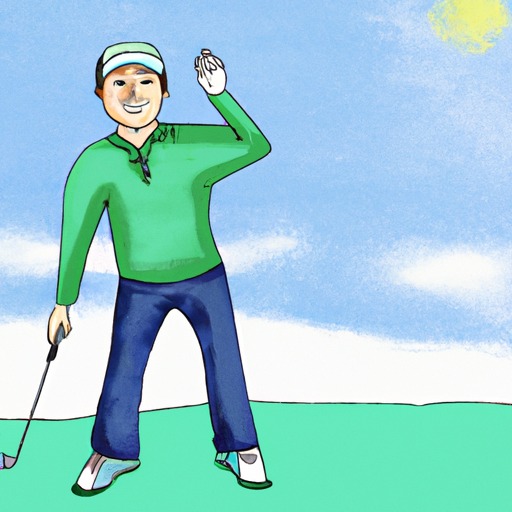 Master the art of selection: Your golf balls, your game, your victory.
Master the art of selection: Your golf balls, your game, your victory.Key Takeaways: Unleashing Your Potential with the Right Golf Ball
As we journey through the fairways of knowledge together, it's essential to pause and reflect on the game-changing insights we've uncovered. Here's a recap of the golden nuggets that can transform your game:
1. Understanding Ball Impact: Different golf balls have distinct impacts on your game, from driving distance to control on the greens. Recognizing this can help you make an informed choice that complements your playing style.
2. Choosing Wisely: Several factors come into play when selecting golf balls, including your skill level, swing speed, and what you're looking to achieve (distance, control, spin). There's no one-size-fits-all, so be prepared to experiment.
3. Value for Money: High price doesn't always mean high performance. Assess your needs, set a budget, and remember that the right ball for you is one that enhances your strengths without breaking the bank.
4. Swing Speed Synergy: Matching your golf ball to your swing speed isn't just talk; it's a strategy that can lead to more powerful shots and overall better performance on the course.
5. Scoring Strategy: The right golf ball can indeed improve your overall score. From boosting confidence to enhancing shot consistency, the correct ball is your silent partner in shaving strokes off your game.
Engage with the Golfeaser Community
Your journey doesn't end here. In fact, it's just the beginning! Here's how you can continue to grow and share in the Golfeaser community:
Share Your Stories: Had a breakthrough on the course? Struggled with a particular aspect of your game? Share your stories with us! Your experiences are valuable, and by sharing them, you help others learn while also gaining new insights yourself.
Join the Newsletter: Sign up for the Golfeaser newsletter to stay updated on the latest golf tips, equipment reviews, and insider stories from the community.
Live the Golfeaser Manifesto: Our manifesto is more than words; it's a way of life. It's about continuous improvement, mutual support, and a shared love for the game of golf. Embrace it, live it, and see how it transforms not just your game, but your entire approach to life and sport.
Feedback and Contributions: Your feedback matters! Have ideas for what you want to see next? Want to contribute an article or tip? Reach out to us. This community thrives on the knowledge and passion of its members.
Remember, golf isn't just a sport; it's a journey of continuous learning and personal growth. So, keep swinging, keep learning, and most importantly, keep enjoying this wonderful game. See you on the course! 🏌️♂️✨
Comprehensive FAQ: Which Golf Balls Should I Use?
What are the key considerations when choosing a golf ball?
What are the key considerations when choosing a golf ball?
Your choice of golf ball significantly impacts your game, influencing factors such as distance, control, and spin. Consider your skill level, playing style, and what part of your game you wish to improve. For instance, beginners might prefer balls that aid distance, while advanced players may opt for balls that offer better control and spin.
How do different types of golf balls affect my playing style?
How do different types of golf balls affect my playing style?
Golf balls come in various constructions, from one-piece for beginners to five-piece for the pros. Each type affects playing style differently. For example, multi-layer balls (three, four, or five-piece) offer more spin and control, suitable for players with a more nuanced game, while two-piece balls are durable and provide more distance, perfect for high-handicap players.
Are expensive golf balls worth the investment?
Are expensive golf balls worth the investment?
The value of expensive golf balls lies in their advanced technology and materials, offering enhanced control, spin, and feel. However, they're most beneficial for low-handicap players who can fully utilize these features. High-handicap players might not notice significant differences, making budget-friendly options more suitable.
How do I match a golf ball to my swing speed?
How do I match a golf ball to my swing speed?
Matching a ball to your swing speed can enhance your game. Low swing speeds (below 85 mph) pair well with softer, low-compression balls for extra distance. Higher swing speeds (over 105 mph) benefit from higher compression balls that provide more control. Those in between have various options depending on personal preference and playing style.
Can the right golf ball improve my overall score?
Can the right golf ball improve my overall score?
Absolutely. The right golf ball can enhance the strengths of your game and mitigate weaknesses. It can provide extra distance, improve control on the green, or even offer better aerodynamics for less drag. Over time, these advantages contribute to a lower score and a more enjoyable game.
How do I know if a golf ball is good?
How do I know if a golf ball is good?
Quality golf balls generally have uniform dimple patterns, a resilient core, and a durable cover. They maintain a consistent trajectory, offer stable flight, and provide reliable spin rates. Test different balls to see how they perform with your playing style.
What's the difference between hard and soft golf balls?
What's the difference between hard and soft golf balls?
Hard golf balls typically have a higher compression rate, leading to longer distances but potentially less control. They're often more durable. Soft golf balls have lower compression, offering better control and a softer feel, making them ideal for players who prioritize spin and precision.
Do golf balls with more dimples perform better?
Do golf balls with more dimples perform better?
Not necessarily. The performance depends on the uniformity and design of the dimples, not just the quantity. Dimples reduce drag and help the ball travel farther and straighter. The optimal number and design of dimples depend on the ball's overall construction and intended use.
Why do some golf balls have a higher spin?
Why do some golf balls have a higher spin?
Higher-spin golf balls often have multi-layer construction with a softer cover, enhancing the grip on the clubface during impact. This feature is beneficial for players looking for more control in their short game, allowing for more aggressive shots into greens.
Is it worth buying recycled or refurbished golf balls?
Is it worth buying recycled or refurbished golf balls?
Recycled or refurbished golf balls can be a cost-effective option, especially for casual or beginner players. However, they may have inconsistencies in performance and durability. Ensure they are high-quality and from a reputable source if you choose this option.
How often should I replace my golf balls?
How often should I replace my golf balls?
Regular players should consider replacing their golf balls every 6 to 12 months, depending on usage and visible wear and tear. Competitive players might change balls more frequently to ensure optimal performance.





